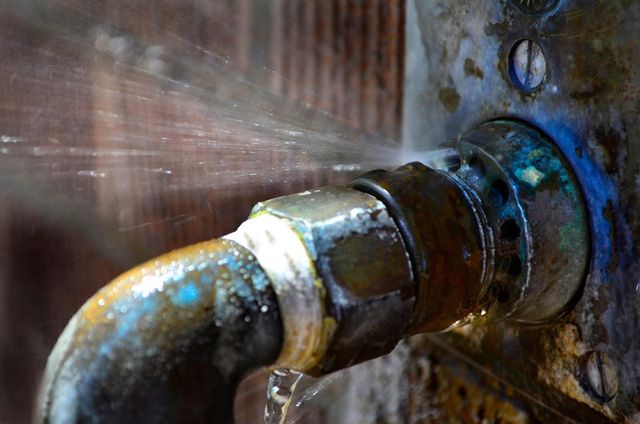6 Ways to Locate Concealed Water Leakages in Your Residence
6 Ways to Locate Concealed Water Leakages in Your Residence
Blog Article
What are your opinions about Finding hidden leaks?

Early detection of leaking water lines can minimize a possible calamity. Some small water leaks might not be noticeable.
1. Take A Look At the Water Meter
Every home has a water meter. Checking it is a proven way that helps you discover leakages. For starters, turn off all the water resources. Guarantee nobody will flush, use the faucet, shower, run the washing maker or dishwashing machine. From there, go to the meter and watch if it will certainly change. Given that no one is using it, there should be no movements. That suggests a fast-moving leak if it moves. If you identify no changes, wait a hr or two and also examine back once more. This implies you might have a slow-moving leak that can even be below ground.
2. Inspect Water Intake
Assess your water expenses as well as track your water intake. As the one paying it, you should notice if there are any type of discrepancies. If you spot sudden changes, in spite of your usage coinciding, it suggests that you have leaks in your plumbing system. Keep in mind, your water expense must drop under the exact same variety on a monthly basis. An abrupt spike in your bill shows a fast-moving leak.
Meanwhile, a consistent boost on a monthly basis, despite the same habits, reveals you have a slow leakage that's also gradually intensifying. Call a plumber to extensively check your home, specifically if you feel a warm location on your flooring with piping underneath.
3. Do a Food Coloring Test
When it comes to water intake, 30% comes from commodes. If the color somehow infiltrates your dish during that time without flushing, there's a leakage in between the tank and also bowl.
4. Asses Exterior Lines
Don't forget to check your exterior water lines also. Needs to water permeate out of the link, you have a loose rubber gasket. One little leak can waste tons of water and spike your water bill.
5. Check as well as Assess the Scenario
Homeowners should make it a behavior to check under the sink counters as well as even inside closets for any bad odor or mold growth. These two red flags indicate a leak so prompt attention is called for. Doing regular inspections, also bi-annually, can conserve you from a major issue.
Examine for discolorations and also compromising as the majority of home appliances and also pipes have a life expectations. If you suspect leaking water lines in your plumbing system, do not wait for it to intensify.
Early discovery of leaking water lines can reduce a possible calamity. Some little water leakages might not be noticeable. Examining it is a proven means that aids you uncover leakages. One little leakage can squander bunches of water and also surge your water expense.
If you think leaking water lines in your plumbing system, don't wait for it to rise.
WARNING SIGNS OF WATER LEAKAGE BEHIND THE WALL
PERSISTENT MUSTY ODORS
As water slowly drips from a leaky pipe inside the wall, flooring and sheetrock stay damp and develop an odor similar to wet cardboard. It generates a musty smell that can help you find hidden leaks.
MOLD IN UNUSUAL AREAS
Mold usually grows in wet areas like kitchens, baths and laundry rooms. If you spot the stuff on walls or baseboards in other rooms of the house, it’s a good indicator of undetected water leaks.
STAINS THAT GROW
When mold thrives around a leaky pipe, it sometimes takes hold on the inside surface of the affected wall. A growing stain on otherwise clean sheetrock is often your sign of a hidden plumbing problem.
PEELING OR BUBBLING WALLPAPER / PAINT
This clue is easy to miss in rooms that don’t get much use. When you see wallpaper separating along seams or paint bubbling or flaking off the wall, blame sheetrock that stays wet because of an undetected leak.
BUCKLED CEILINGS AND STAINED FLOORS
If ceilings or floors in bathrooms, kitchens or laundry areas develop structural problems, don’t rule out constant damp inside the walls. Wet sheetrock can affect adjacent framing, flooring and ceilings.
https://www.servicemasterbyzaba.com/blog/how-to-detect-water-leakage-in-walls/

We are very intrigued by Finding hidden leaks and I am assuming you liked our piece. For those who appreciated our blog post if you please do not forget to share it. Thank-you for going through it.
Report this page